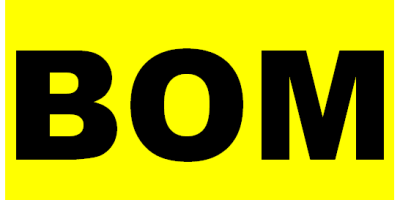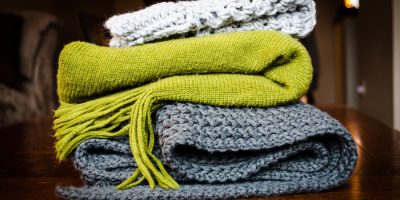Merchandising is an important sector in the apparel industry where merchandisers have to play an important role in the marketing and manufacturing departments simultaneously. A merchandiser in the apparel industry is a person around whom the whole process is completed. A merchandiser acts as a bridge between the buyer and the factory. Considering the importance of merchandising department and knowing the whole thing to conduct activities quickly it is very important so that anyone can do their work very smartly.
Merchandiser is the key person to do internal & external communication in apparel industry. So merchandisers should pass the buyer’s instructions and specifications to factory people clearly to erase problems. Even a small missing, mistake, or deviation of instruction may create a big panic. Sometimes, they may not be correctable. Hence, all the instructions to be double checked before being informed to other departments. Please be remembered that prevention is better than cure.
Apparel Merchandiser main Responsibilities
Let’s discuss how a merchandiser will execute an apparel order in garments industry. Now we will know step by step how to execute an order from the buyer to the shipment after receiving an order. Let’s take a look at what a merchandiser has to do in the garment industry frequently.
- Order received from the buyer with details: The first task of a merchandiser is to collect orders from buyers. Build a friendly relationship with the buyer or the buying house. Collect complete information of the order such as artwork, measurement sheet, technical sheet, reference sample from the buyer to carry out the order.
- Prepare consumption and cost sheet: Consumption sheet has to be made with each item used in the sample and the cost sheet has to be made at the same time.
- Price negotiation with the buyer: Being able to bargain nicely with the buyer is one of the qualities of a good merchandiser. At this stage, the merchandiser has to negotiate the price of the product with the buyer. The merchandiser must look at the profitability of the factory but the price cannot be stated so that the buyer does not run away after hearing the price.
- Confirmation of order and receive the order sheet: If the price of the product is satisfactory to the buyer, the buyer will place the order at the factory specifying the specified delivery date and shipping method. The merchandiser has to send the order confirmation message to the buyer. At this stage, the merchandiser gradually begins to prepare for bulk production.
- Order sheet forward to the planning department: As soon as the order is confirmed, you have to inform the planning department and confirm the delivery date by booking the production line.
- Make buyer requested sample i.e. proto sample, fit sample: Proto sample or fit sample should be developed using available raw material by following the buyer’s artwork, measurement sheet, technical sheet, and reference sample and sent to the buyer for review.
- Start material sourcing and collect sample materials: It is the merchandiser’s responsibility to get the Lab dips from the processing mill and to get approval from the buyer. They have to follow the technical sheet of the buyer and collect the specified quality products from the suppliers.
- Make swatch card and send it to the buyer for approval: Each item has to be trimmed into small pieces with glue or pin then attached with the swatch board and sent to the buyer for approval.
- Request the buyer to issue LC: To book raw material from the supplier for bulk production, merchandiser has to apply to the buyer to issue LC.
- Preparing internal order sheets: Merchandiser has to prepare internal order sheets based on the buyer’s order sheets before start material procurement. While preparing internal order sheets, merchandiser should prepare it by taking care of each and every detail. He may skip some information to other departments, like buyer’s address, export price, delivery date, etc. The other departments may not need this information. But the other information like artwork, style name, material specifications, measurements, order quantity, color assortment, fabric and accessories required quantity with loss, trims, packing guideline, and shipping information to be clearly informed to the concerned departments.
- Make requisition for bulk fabric: As soon as the raw material is approved by the buyer, the quantity of fabric required for production should be taken out and the order of fabric should be placed to the supplier.
- Make requisition for bulk accessories: Consume the number of accessories required for production and place the order of accessories to the supplier.
- Sample development and inquiry: This time merchandiser has to collect sample materials from suppliers to develop salesmen samples or promotional samples, wash test sample, photo-shoot samples to expedite the orders.
- Raw material collection and ensure goods in-house in factory premises: The raw material ordered from the supplier has to be in-house at the factory within the stipulated time. Otherwise, the production line will shut down and the company will lose.
- Cross-check material list to find out material missing or shortage: The material list has to be cross-checked repeatedly so that when the production starts, there is no need to read about material missing or shortage problem.
- Make PP sample (Pre-production sample) with all actual materials: At this stage PP sample i.e. pre-production sample has to be made using actual material, based on which the production will start. Then PP sample has to be sent to the buyer for approval.
- Arrange pre-production meeting: A pre-production meeting has to be arranged before starting bulk production as soon as we get the comments of PP sample from the buyer. The meeting will be attended by the officials and employees of the concerned production floor so that it is possible to produce quality complete products in accordance with the instructions of the buyer.
- Start bulk production: Then the much-awaited bulk production will start with the specified delivery date in mind.
- Visit the production line and ensure product quality: The merchandiser has to visit the production line regularly and keep an eye on the quality of the product.
- Arrange inline inspection: Talk with the buyer to fix the inline inspection date. Before coming to Buyer Quality, if necessary, you have to meet with the quality people of the factory and give them guidelines.
- Collect production sample and send buyers to review: Top samples should be collected from the production line and sent to the buyer for review.
- Collect daily production and quality report: Daily production report and quality report should be collected. So that it is possible to do ex-factory before the specified delivery date.
- Production sample send to buyer nominated lab for testing: Production samples should be sent to the nominated lab of the buyer where lab tests will be done to verify the quality of the product.
- Send shipping sample to buyer: Before shipment, sample should be collected from the production line and shipping sample should be sent to the buyer.
- Arrange final inspection through buyer quality or third party quality: Final inspection must be completed by the buyer quality or buyer nominated third party quality before shipment after completion of production.
- Communicate with commercial team and arrange ex-factory: Merchandiser should contact with the factory commercial team to ensure timely shipment of the product ex-factory.
- Send all shipping documents to the buyer: All the shipping documents such as invoice, packing list, BL, GSP certificate, Country of Origin certificate have to be provided to the buyer as soon as early in order to unload the goods from the port and get the factory payment on time.
- Received payment from bank: The factory will receive the payment from the bank once unloading the goods at the buyers port end.
- Close the order and keep all documents for record: The order must be closed and all relevant documents must be saved for the future.
You may like: Daily work practice in merchandising department
Hopefully, you have understood from the above discussion what a merchandiser has to do in the garments industry regularly and how to execute an order up to shipment by receiving an order from the buyer. Let us know in the comments box what you think of the above information on merchandising supplements.




